EBR Strengthening Technique for Concrete, Long-Term Behaviour and Historical Survey †
Abstract
:1. Historical Survey of Development of EBR Technique
1.1. Research on EBR Steel
1.2. Research on EBR CFRP
1.3. Research on Prestressed EBR CFRP
1.4. Transfer to Industry
1.5. Long-Term Behaviour
1.6. Long-Term Monitoring Campaigns
2. Concrete Beam with a Bonded Steel Plate
2.1. Introduction
2.2. Materials and Test Set-Up
2.3. Results
- Existing maximum flexural moment from loading: 30 × 0.945 = 28.4 kNm (Figure 19),
- Flexural resisting flexural moment: 159 × 0.95 × 0.19 = 28.7 kNm.
3. Rhine Bridge Oberriet with Externally Bonded CFRP Strips
4. Recommendations
- No water wetting,
- FRPs should be used only for Exposition Classes X0, XC1 (dry) and XC3,
- For other exposition classes: special measures such as coatings are necessary,
- Moderate sustained loading (prestressing, load),
- Service temperatures ≤ 50 °C (ca. 10° lower as Tg)
- If FRPs are exposed to direct UV, there will be a gradual degradation of the polymer matrix at the surface. From a structural point of view this is no problem but it looks ugly. Therefore, in such circumstances, the application of a gelcoat is recommended.
5. Conclusions
- although very highly loaded, the strengthening of an RC beam with externally bonded steel plates is, after 47 years of sustained loading in the laboratory, still in good condition, and no failure was observed,
- the increase of the displacements happens mainly due to creep of concrete,
- the epoxy adhesive for the bonding of the steel plate to the concrete is still in good condition.
- the CFRP strips are still in good condition,
- the measurements show only seasonal temperature deformations.
Acknowledgments
Author Contributions
Conflicts of Interest
References
- L’Hermite, R.; Bresson, J. Béton armé par collage d’armature. In Proceedings of the Collogue RILEM, Paris, France, September 1967; p. 175. [Google Scholar]
- Bresson, J. Nouvelles recherches et applications concernant l’utilisation des collages dans les structures. Béton plaqué. In Annales de l’ITBTP; Série Béton, Béton Armé; Editions ESKA: Paris, French, 1971; Volume 278, pp. 22–55. [Google Scholar]
- Ruggli, C.; Wyss, P.; Zenobi, G. Klebearmierung-eine neue Technik zur Erhaltung von Bausubstanz. Schweiz. Ing. Archit. 1980, 98, 653–658. [Google Scholar]
- Johnson, R.P.; Tait, C.J. The strength in combined bending and tension of concrete beams with externally bonded reinforcing plates. Build. Environ. 1981, 16, 287–299. [Google Scholar] [CrossRef]
- Dussek, I.J. Strengthening of bridge beams and similar structures by means of epoxy-resin-bonded external reinforcement. Transp. Res. Rec. 1980, 780, 21–24. [Google Scholar]
- Ladner, M.; Weder, C. Concrete Structures with Bonded External Reinforcement; Empa Report No. 206; Empa: Dübendorf, Switzerland, 1981; p. 61. [Google Scholar]
- Ladner, M.; Flüeler, P. Versuche an Stahlbetonbauteilen mit geklebter Armierung. Schweiz. Bauztg. 1974, 92, 463–470. [Google Scholar]
- Agthe, R. Die Ausführung der Klebearbeiten. Schweiz. Bauztg. 1974, 92, 471–474. [Google Scholar]
- Fässler, A.; Derendinger, P. Die Sanierung der Gizenenbrücke über die Muota: Bericht des Bauingenieurs. Schweiz. Ing. Archit. 1980, 98, 1003–1004. [Google Scholar]
- Mathys, E. Die Sanierung der Gizenenbrücke über die Muotha: Ausführung der Armierungsarbeiten. Schweiz. Ing. Archit. 1980, 98, 1005–1006. [Google Scholar]
- Ladner, M. Die Sanierung der Gizenenbrücke über die Muota: Belastungsversuche. Schweiz. Ing. Archit. 1980, 98, 1006–1009. [Google Scholar]
- Meier, U. Topic 2, Designing and producing materials by combination. Mater. Struct. 1988, 1988, 85–89. [Google Scholar] [CrossRef]
- Meier, U. Modern Materials in Bridge Engineering; IABSE Report; IABSE c/o ETH: Zürich, Switzerland, 1991; Volume 64, pp. 311–323. [Google Scholar]
- Meier, U. Brückensanierungen mit Hochleistungs-Faserverbundwerkstoffen. Mater. Tech. 1987, 15, 125–128, (In German and French). [Google Scholar]
- Kaiser, H. ETH No. 8918 in German: Bewehren von Stahlbeton mit Kohlenstoffaserverstärkten Epoxidharzen (Reinforcing of Reinforced Concrete Using Carbon Fiber Reinforced Epoxy Resins). Ph.D. Thesis, Empa Dübendorf ETH Zürich, Zürich, Germany, 1989. [Google Scholar]
- Meier, U. Rehabilitation and Retrofitting of Structures Trough External Bonding of Thin Carbon Fibre Sheets. In Proceedings of the 7th European Conference on Composite Materials ECCM 7, London, UK, 31 May 1996. [Google Scholar]
- Meier, U.; Deuring, M. The application of fiber composites in bridge repair—A world premiere at the gates of Lucerne. Strasse und Verkehr 1991, 77, 534–535. [Google Scholar]
- Meier, U. Strengthening of structures using carbon fibre epoxy composites. Constr. Build. Mater. 1995, 9, 341–351. [Google Scholar] [CrossRef]
- Deuring, M. Verstärken von Stahlbeton Mit Gespannten Faserverbundwerkstoffen (Post-Strengthening of Concrete Structures with Pre-Stressed Advanced Composites). Ph.D. Thesis, ETH Zürich, Zürich, Switzerland, 1993. [Google Scholar]
- Michels, J.; Barros, J.; Costa, I.; Sena-Cruz, J.; Czaderski, C.; Giacomin, G.; Kotynia, R.; Lees, J.; Pellegrino, C.; Zile, E. Prestressed FRP systems. In RILEM State-of-the-Art Reports; Springer Science + Business Media: Berlin, Gemany, 2016; pp. 263–301. [Google Scholar]
- SIA166. Klebebewehrungen (Externally Bonded Reinforcement); Schweizerischer Ingenieur-und Architektenverein, SIA: Zurich, Switzerland, 2004. [Google Scholar]
- Fib. Externally Bonded FRP Reinforcement for RC Structures; Bulletin 14; International Federation for Structural Concrete (fib): Lausanne, Switzerland, 2001. [Google Scholar]
- CNR. Guide for the Design and Construction of Externally Bonded FRP Systems for Strengthening Existing Structures; CNR-DT 200/2004; CNR-Advisory Committee on Technical Recommendations for Construction: Rome, Italy, 2004. [Google Scholar]
- ACI_440.2R. Guide for the Design and Construction of Externally Bonded FRP Systems for Strengthening Concrete Structures (ACI 440.2R-08); American Concrete Institute: Farmington Hills, MI, USA, 2008. [Google Scholar]
- Triantafillou, T.; Matthys, S. Fibre-reinforced polymer reinforcement enters fib Model Code 2010. Struct. Concr. 2013, 14, 335–341. [Google Scholar] [CrossRef]
- Fib. fib Model Code for Concrete Structures 2010; International Federation for Structural Concrete (fib): Lausanne, Switzerland, 2013; p. 402. [Google Scholar]
- Meier, U. Repair Using Advanced Composites; IABSE Report; IABSE c/o ETH: Zürich, Switzerland, 1997; Volume 999, pp. 113–124. [Google Scholar]
- Correia, L.; Sena-Cruz, J.; Michels, J.; França, P.; Pereira, E.; Escusa, G. Durability of RC slabs strengthened with prestressed CFRP laminate strips under different environmental and loading conditions. Compos. B Eng. 2017, 125, 71–88. [Google Scholar] [CrossRef]
- Harmanci, Y.E.; Michels, J.; Czaderski, C.; Loser, R.; Chatzi, E. Long-term residual anchorage resistance of gradient anchorages for prestressed CFRP strips. Compos. B Eng. 2018, 139, 171–184. [Google Scholar] [CrossRef]
- Kim, S.H.; Han, K.B.; Kim, K.S.; Park, S.K. Stress-strain and deflection relationships of RC beam bonded with FRPs under sustained load. Compos. B Eng. 2009, 40, 292–304. [Google Scholar] [CrossRef]
- Foraboschi, P. Analytical model to predict the lifetime of concrete members externally reinforced with FRP. Theor. Appl. Fract. Mech. 2015, 75, 137–145. [Google Scholar] [CrossRef]
- Czaderski, C.; Meier, U. Long term behavior of epoxy adhesives and FRPs for strengthening of concrete. In Proceedings of the SMAR 2017, Zurich, Switzerland, 13–15 September 2017. [Google Scholar]
- Egger, G. Geklebte Lamellenbewehrungen haben Langzeittest bestanden. tec21 2003, 129, 11–13. [Google Scholar]
- Hugenschmidt, F. Die Anwendung von Epoxidharzen in der Bautechnik. Schweiz. Ing. Archit. 1980, 98, 1010–1011. [Google Scholar]
- Walser, R.; Steiner, W. Strengthening a Bridge with Advanced Materials. Struct. Eng. Int. 1997, 7, 110–112. [Google Scholar] [CrossRef]
- Czaderski, C.; Meier, U. Long-Term Behaviour of CFRP Strips for Post-Strengthening. In Proceedings of the 2nd International fib Congress, Naples, Italy, 5–8 June 2006. [Google Scholar]
- Meier, U. The life times of polymer composites in construction. In Proceedings of the AIP Conference, VIII International Conference on “Times of Polymers and Composites”, Naples, Italy, 19–23 June 2016. [Google Scholar]
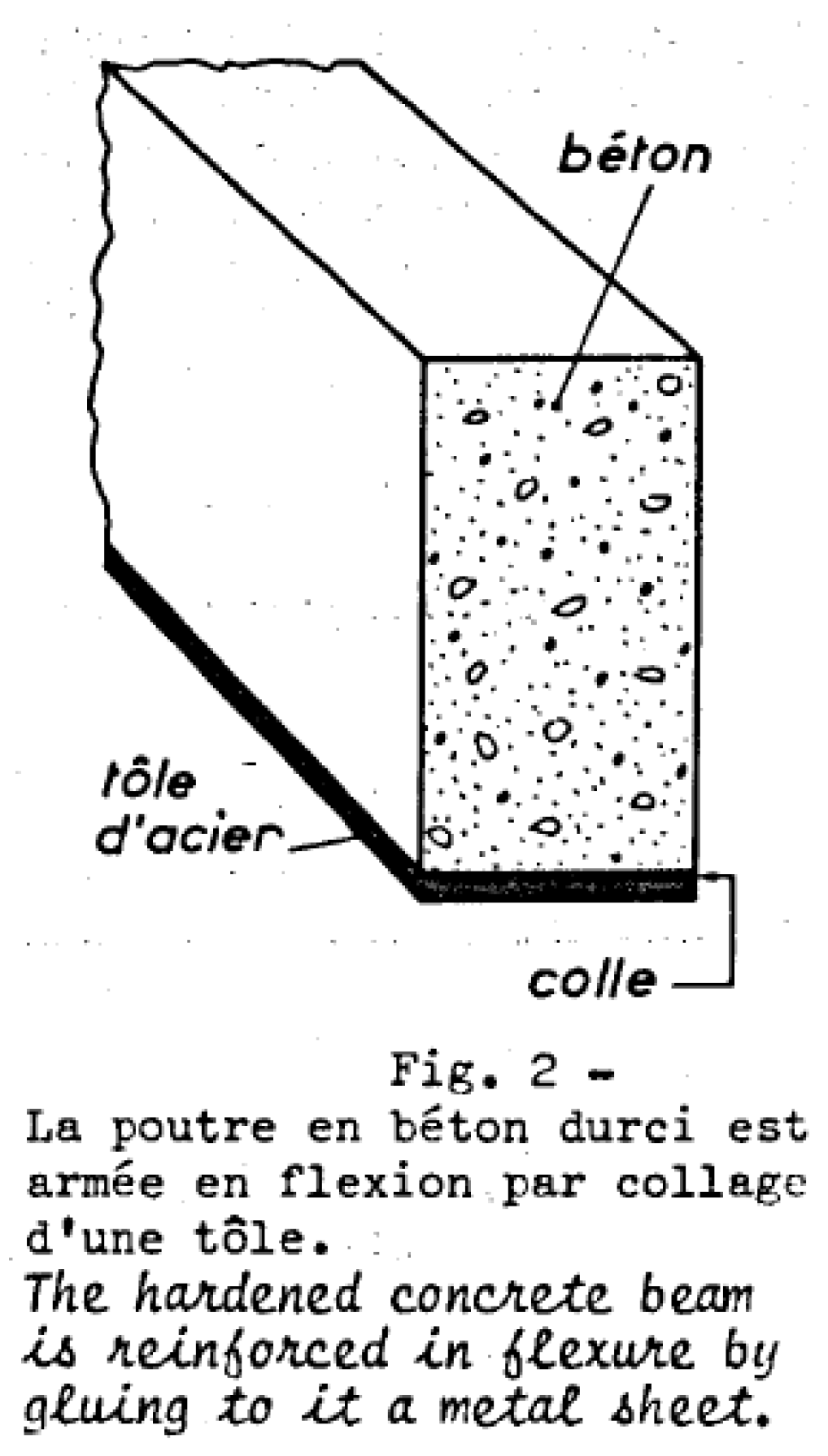
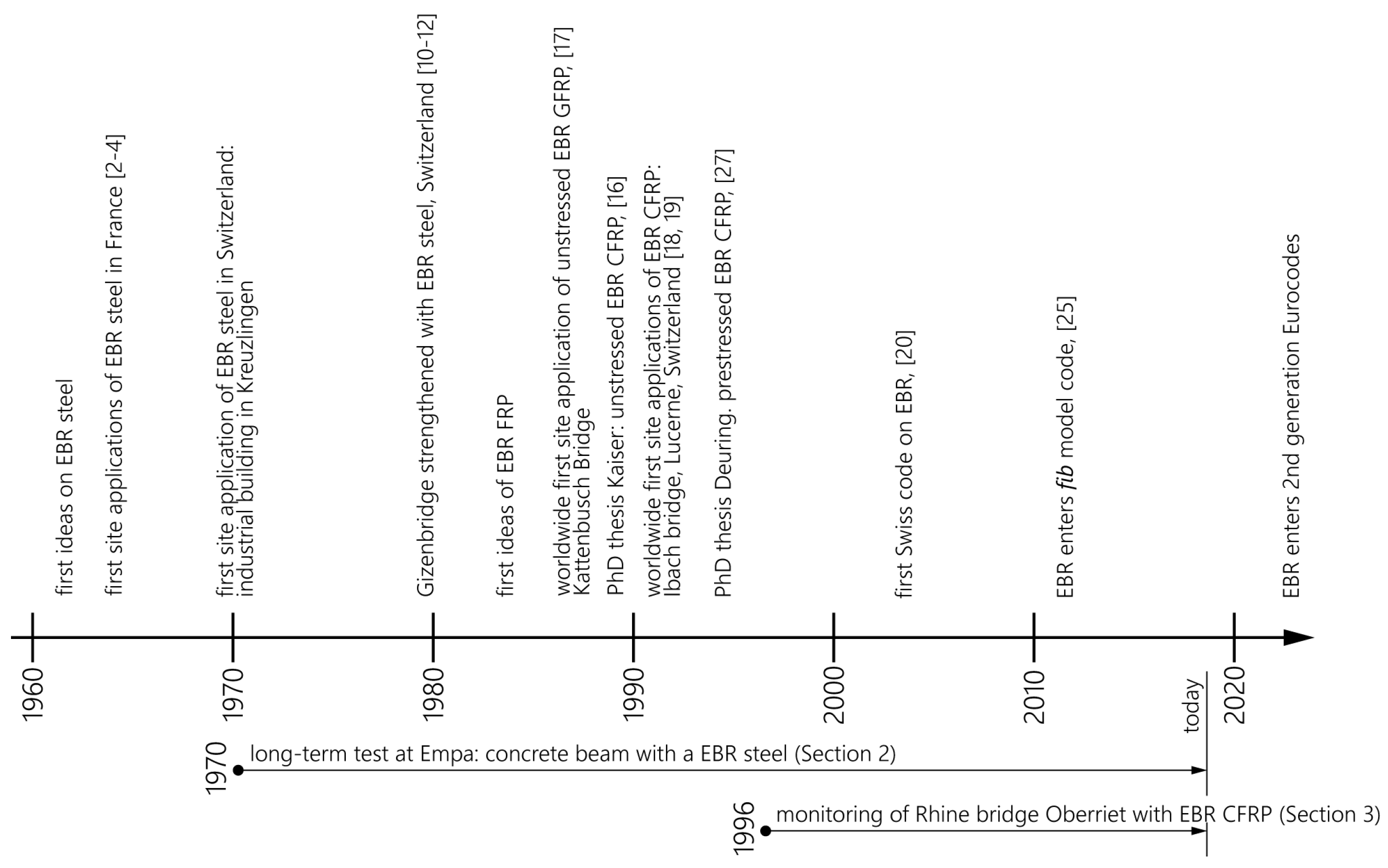
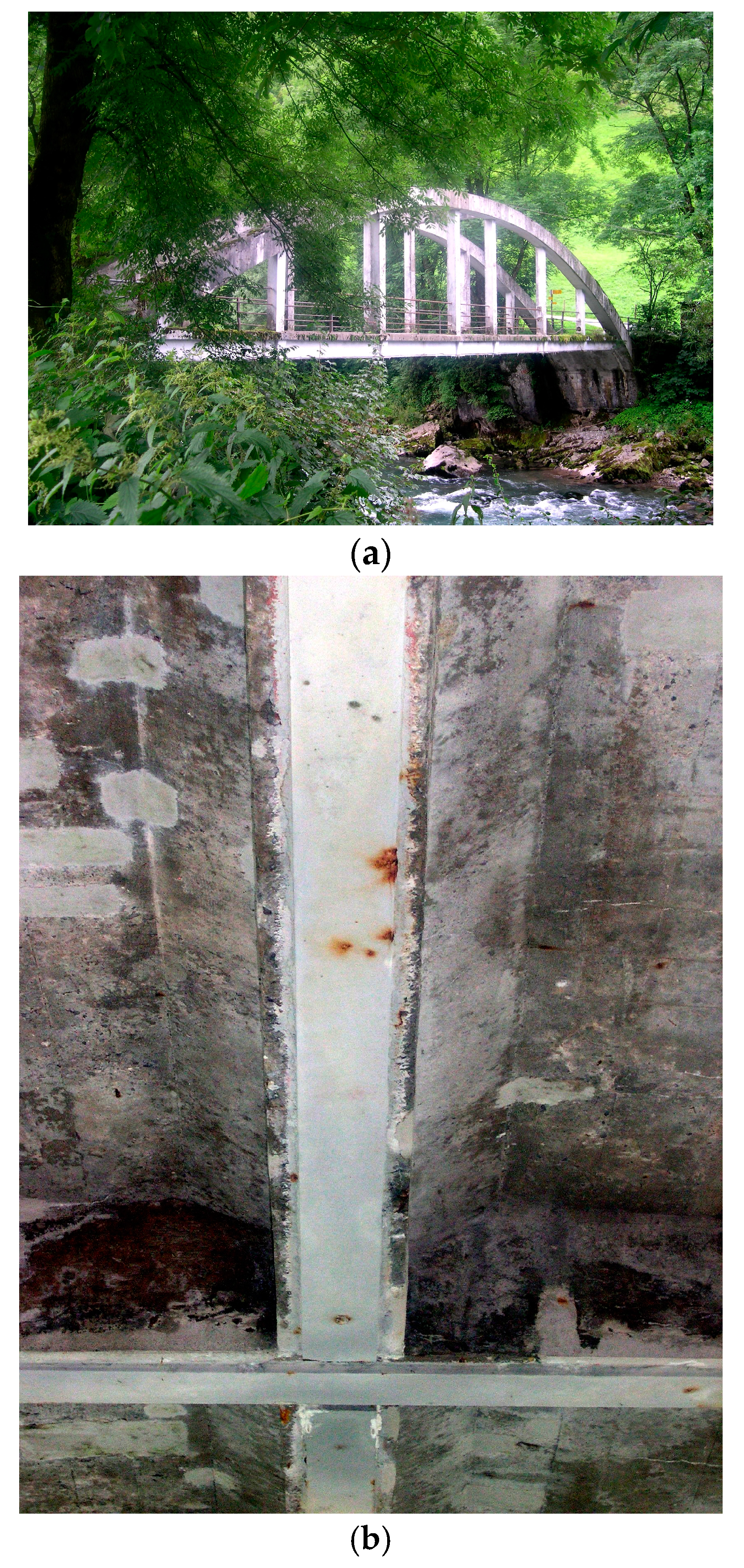
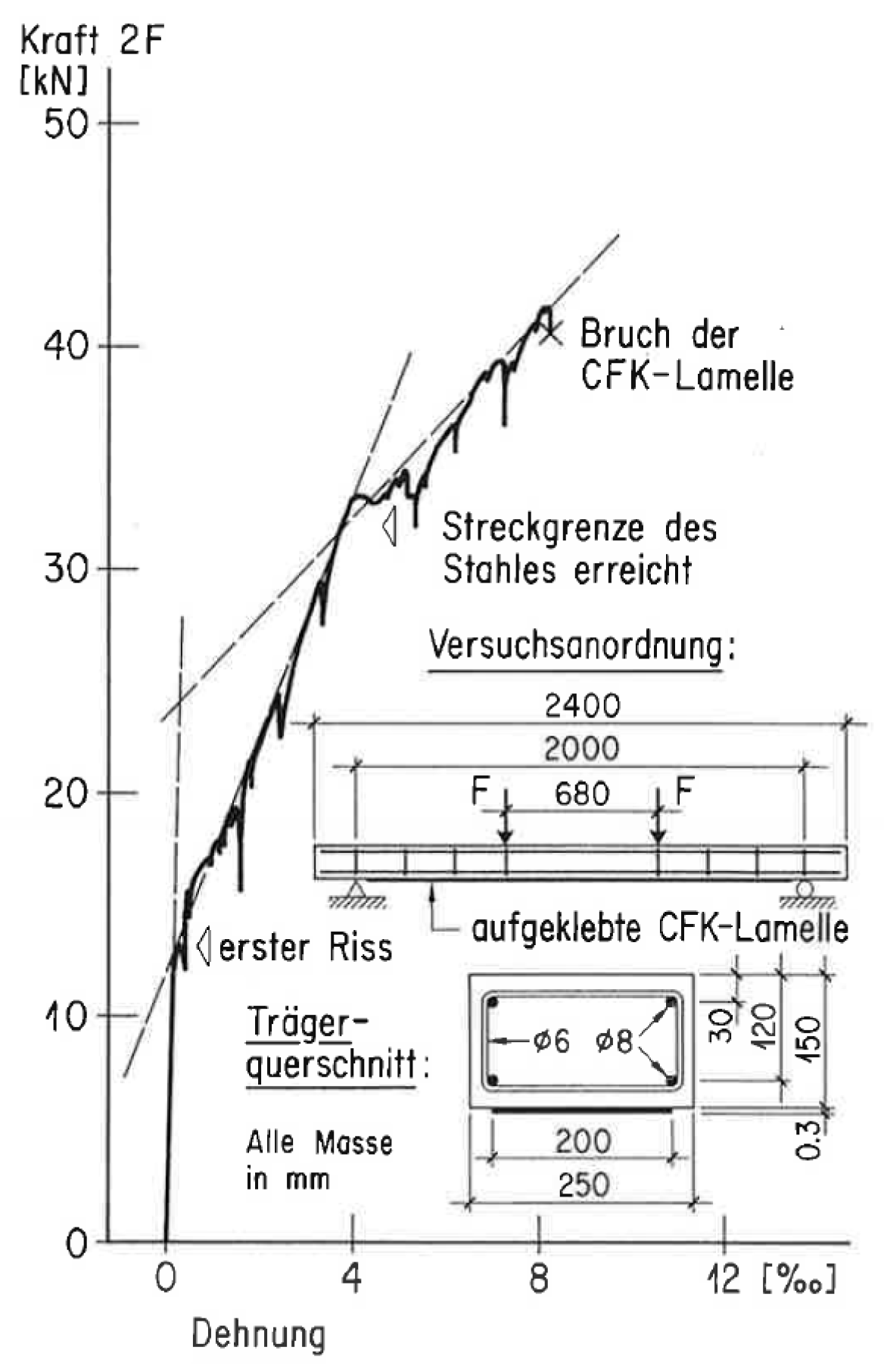

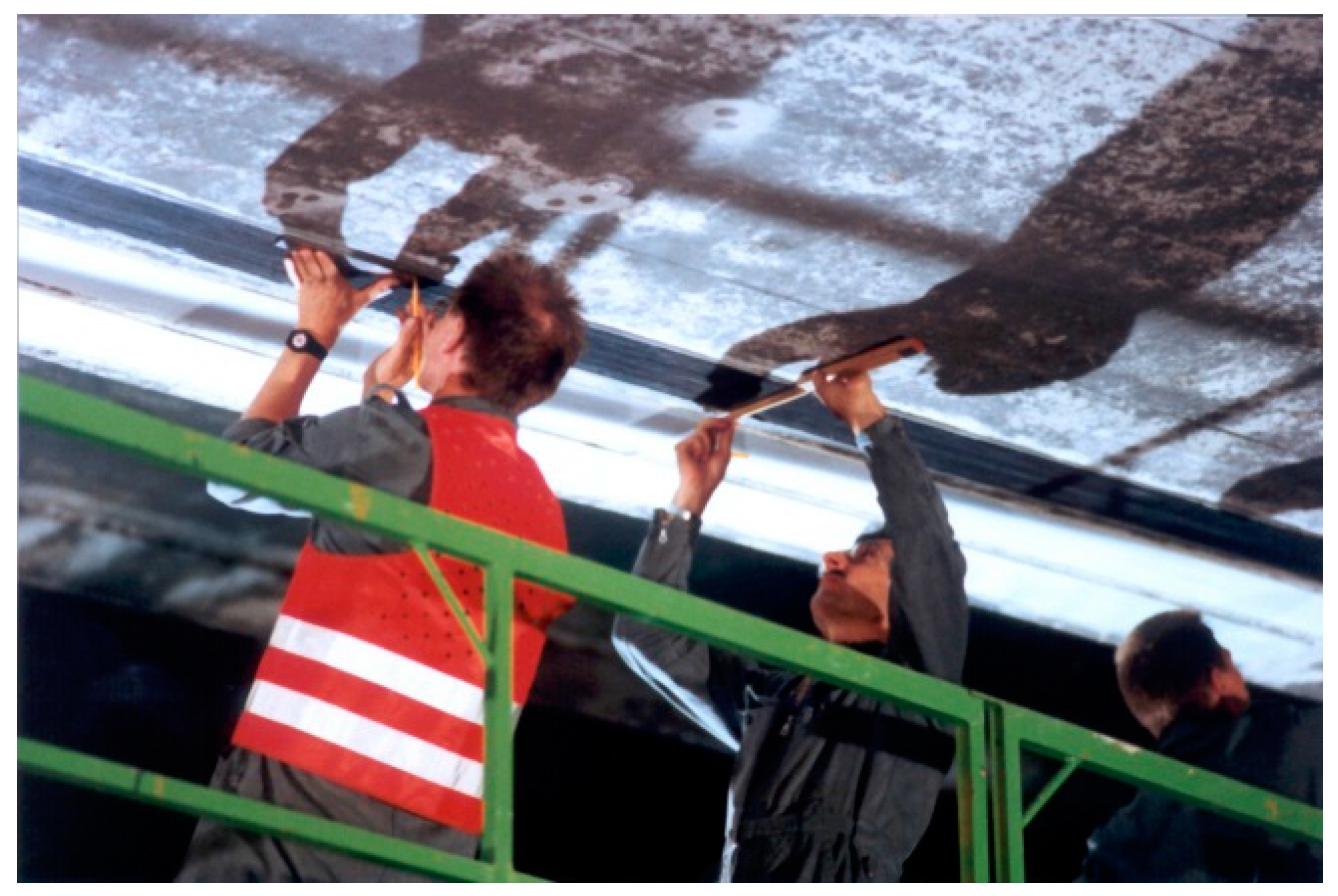
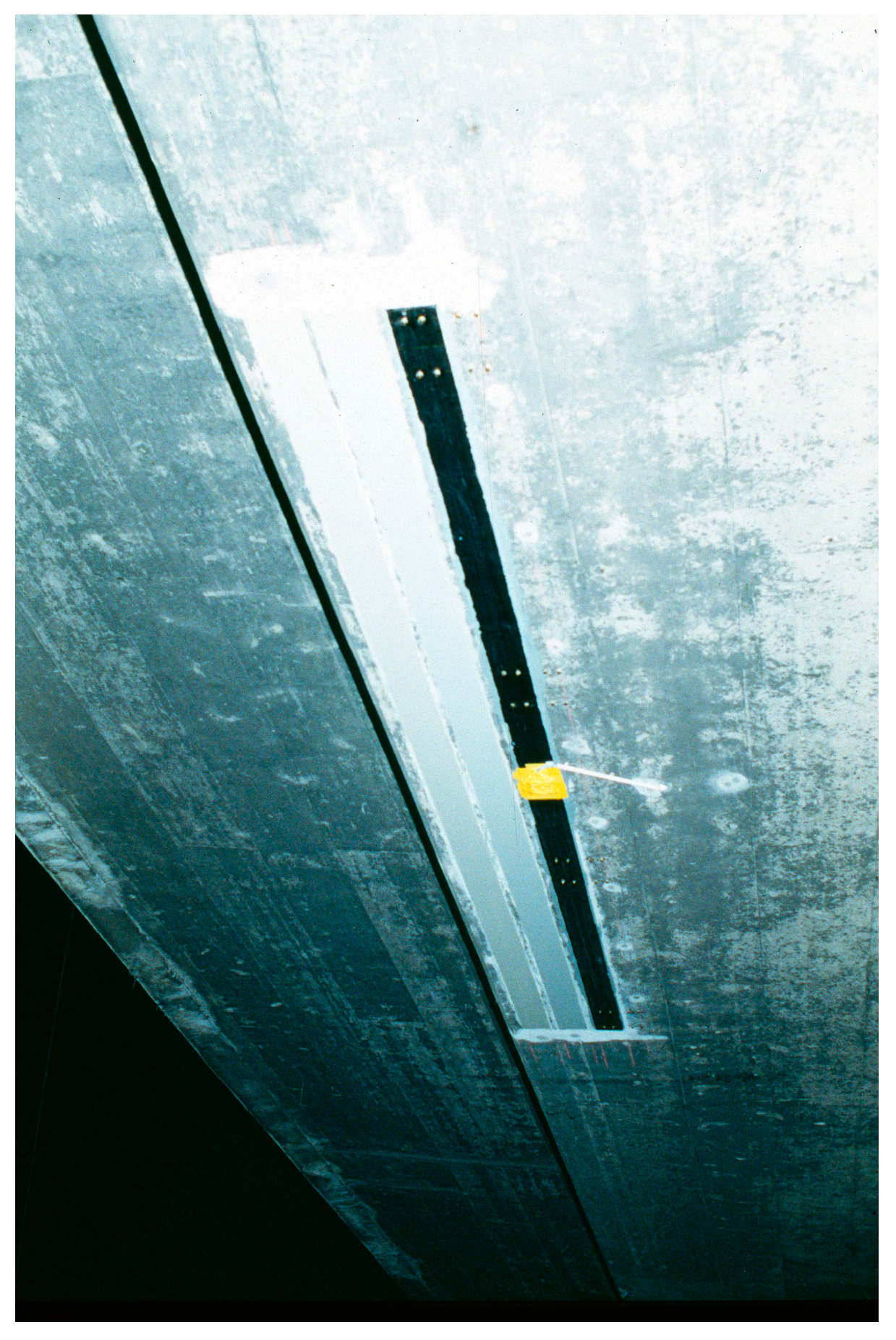
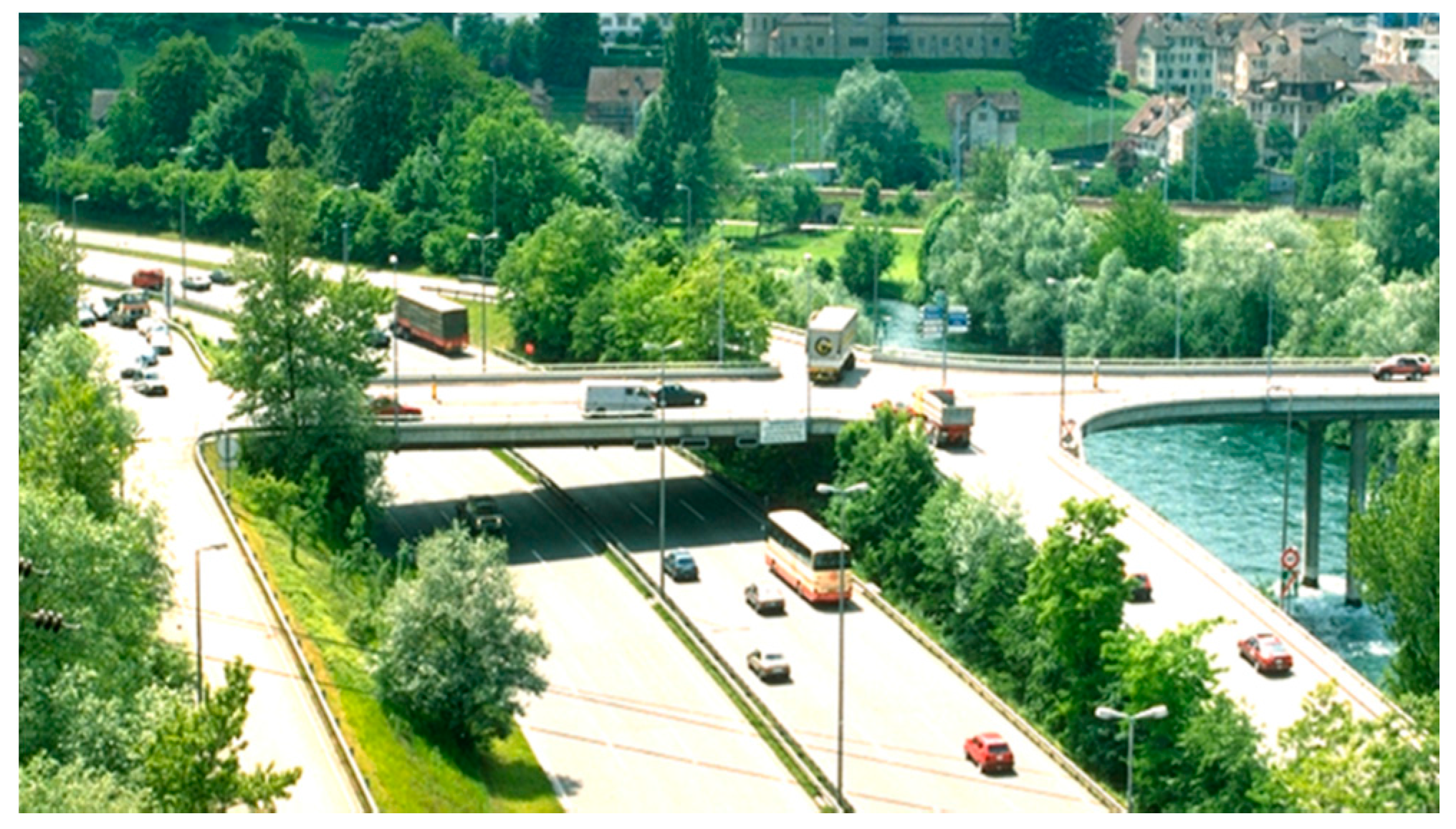
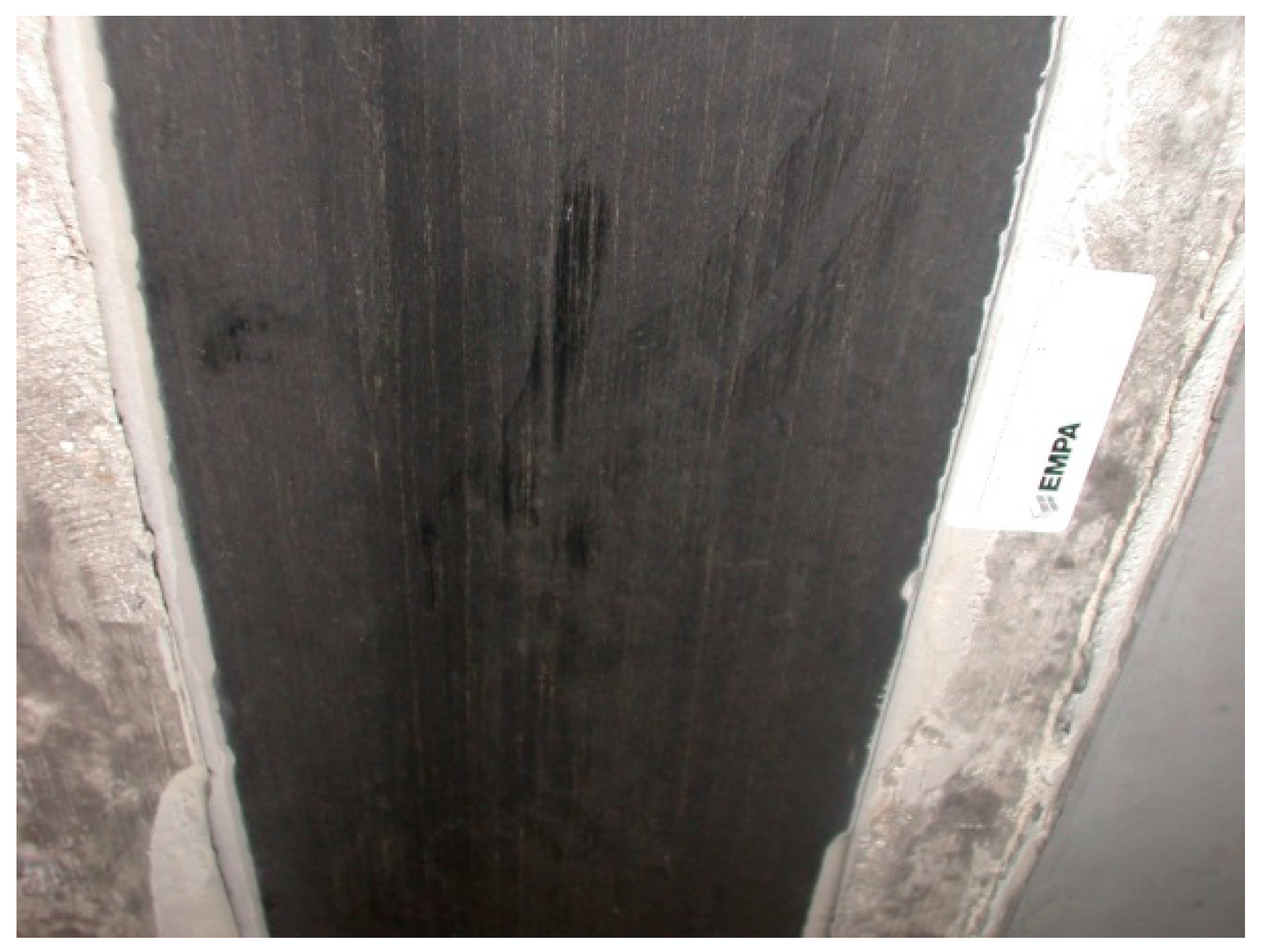

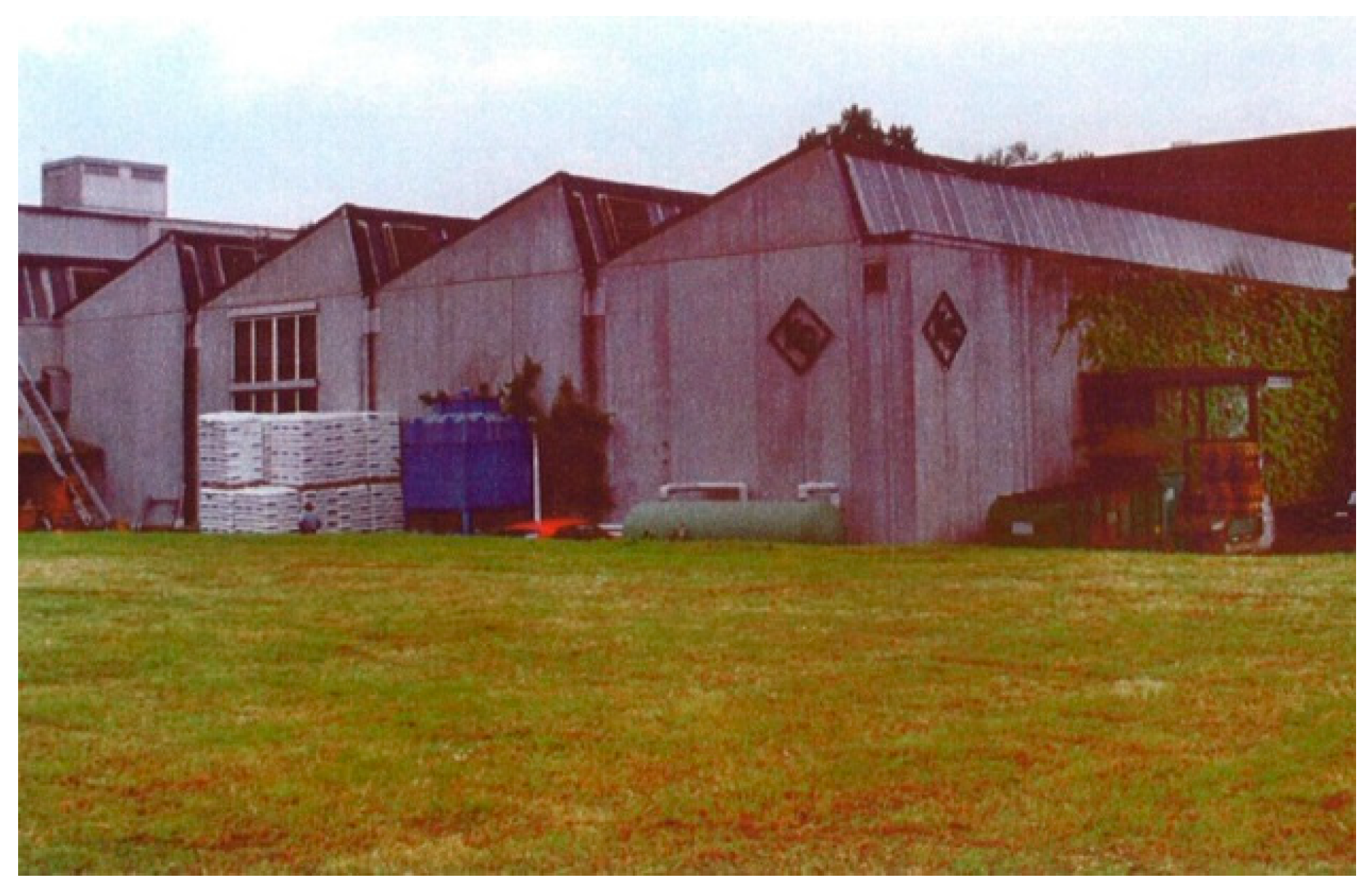
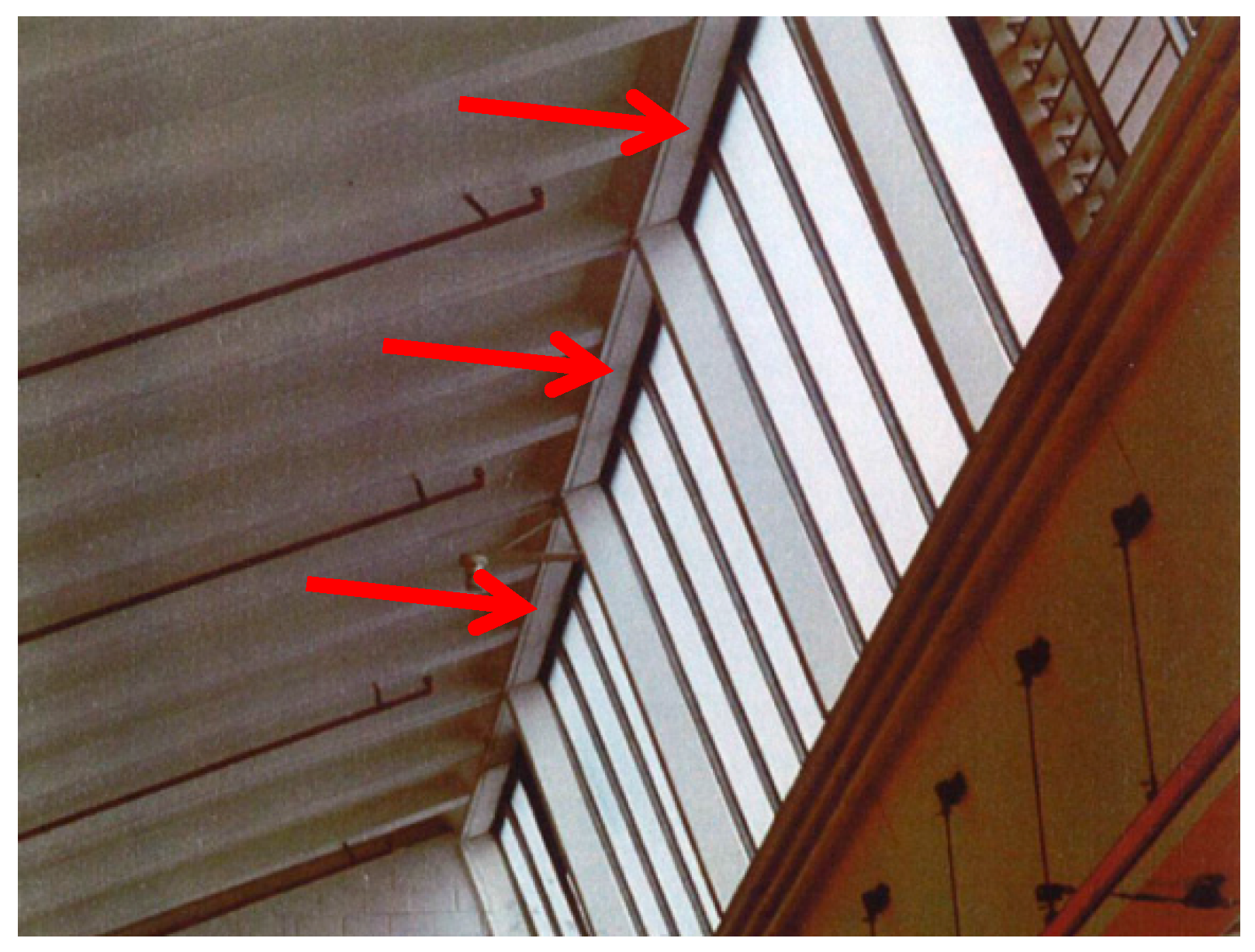
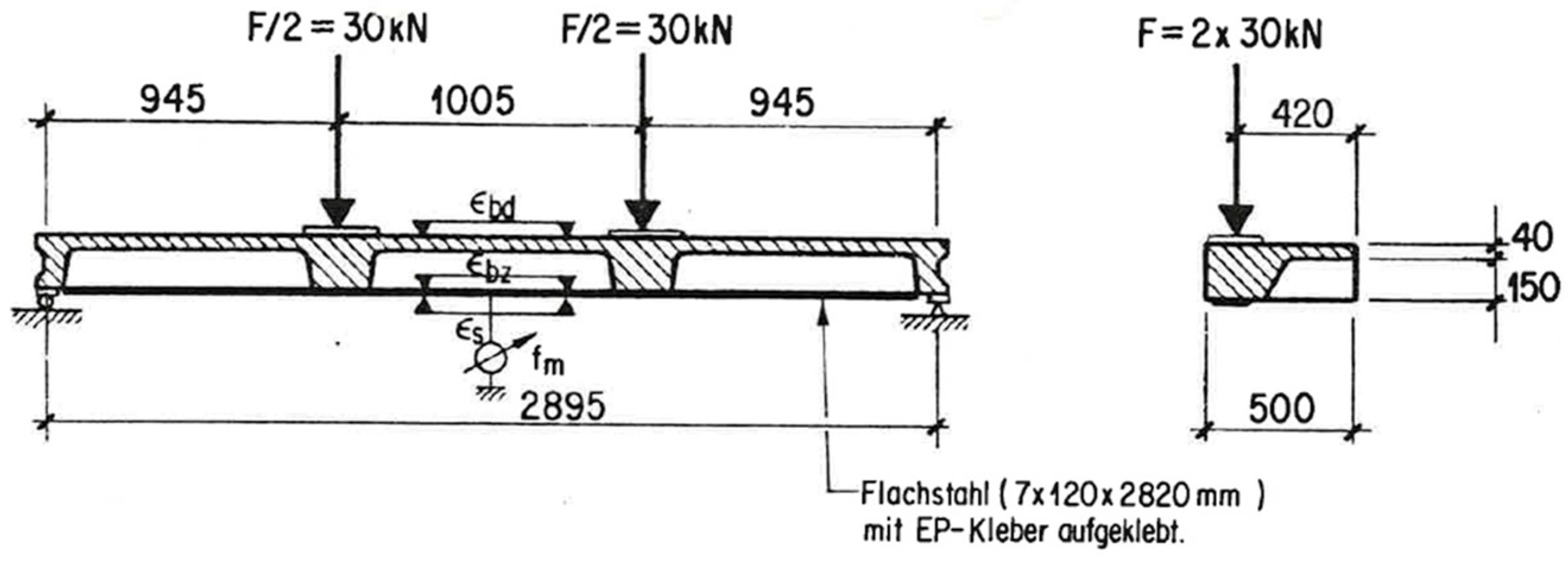
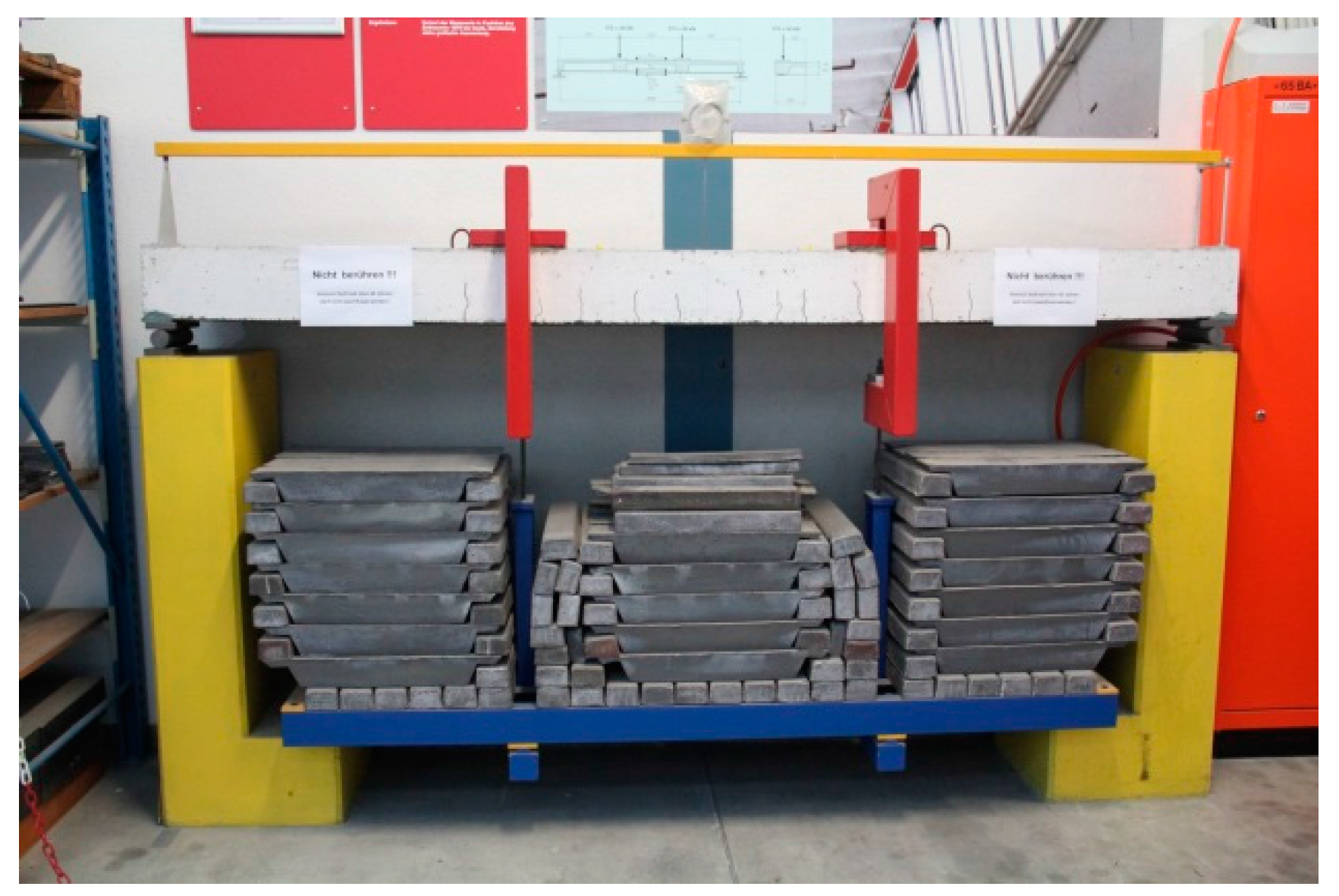
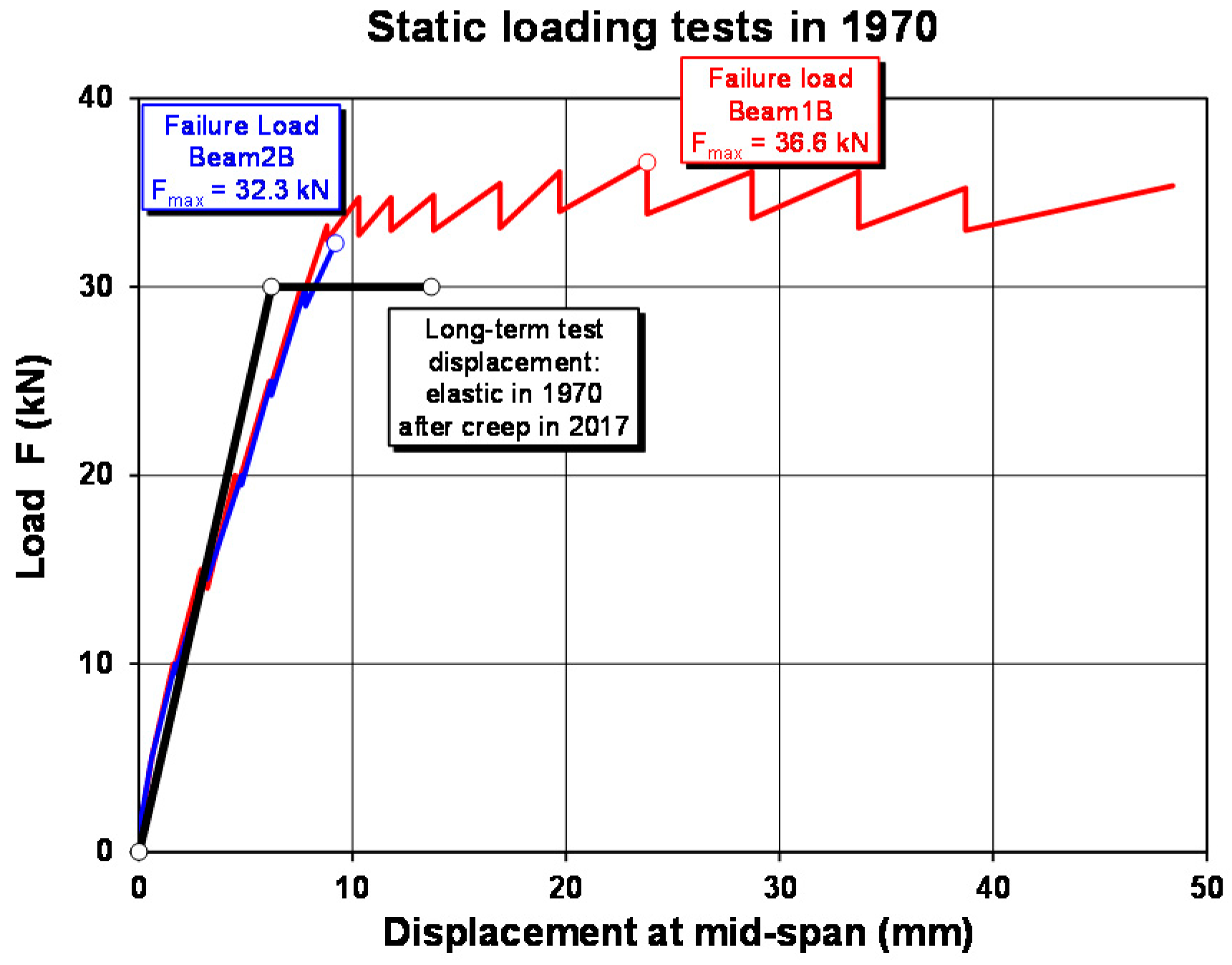
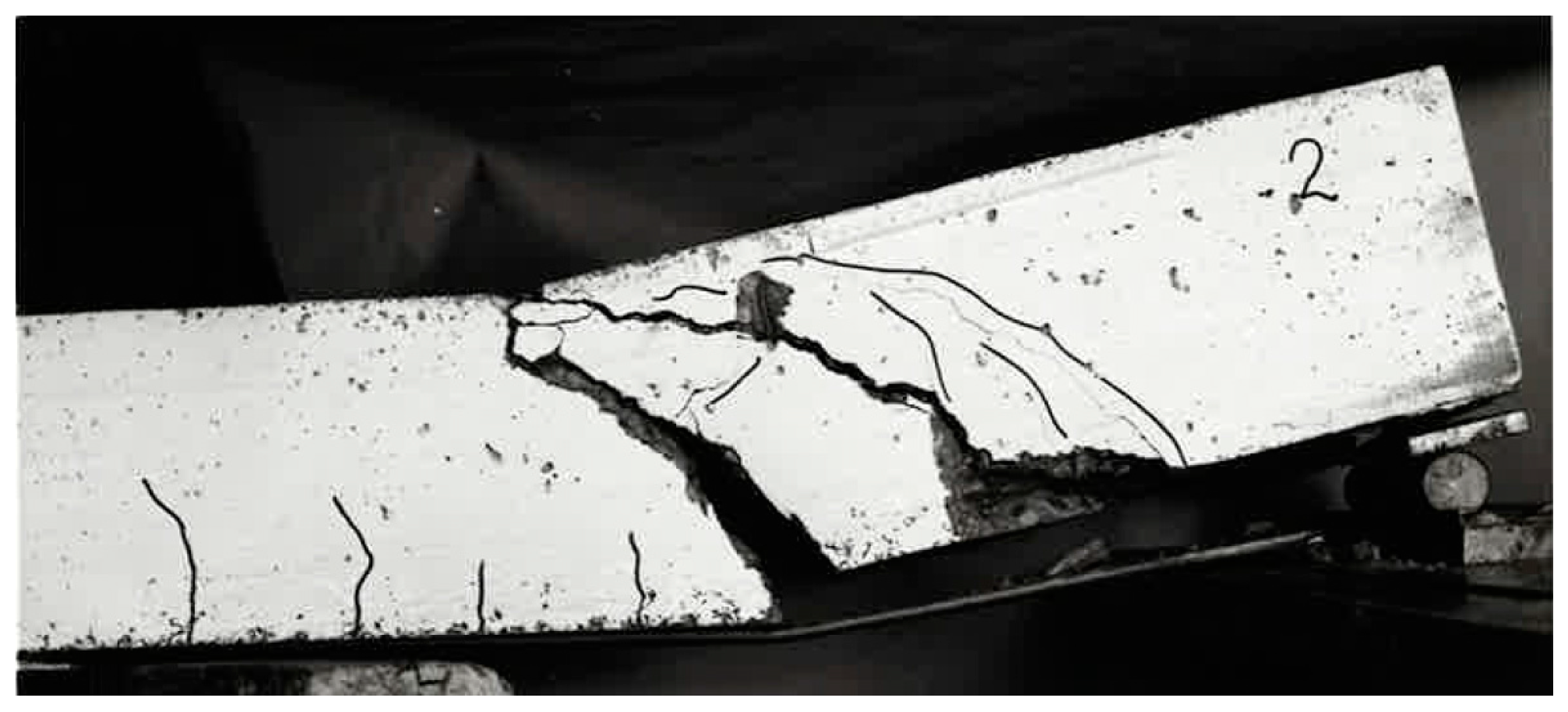
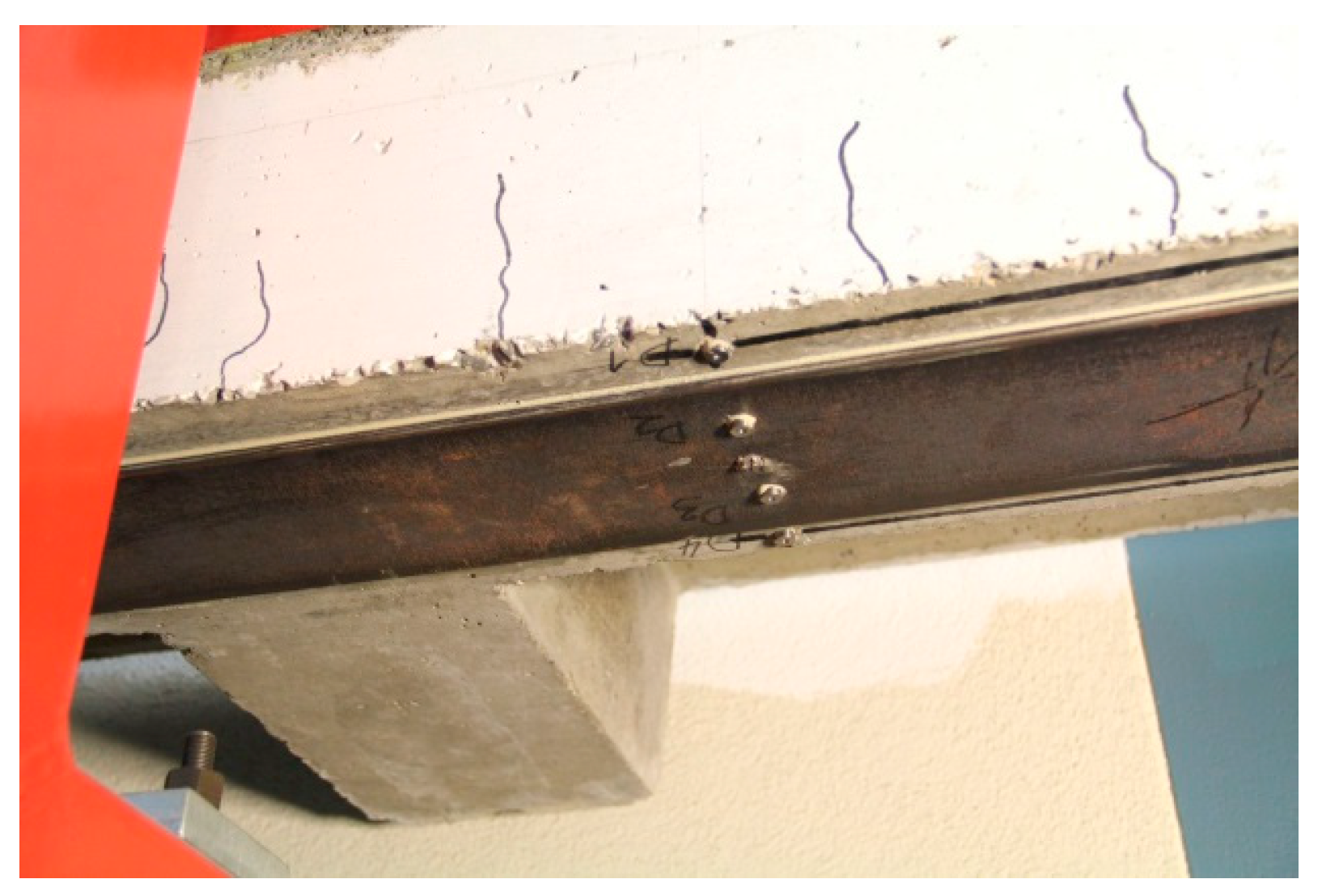
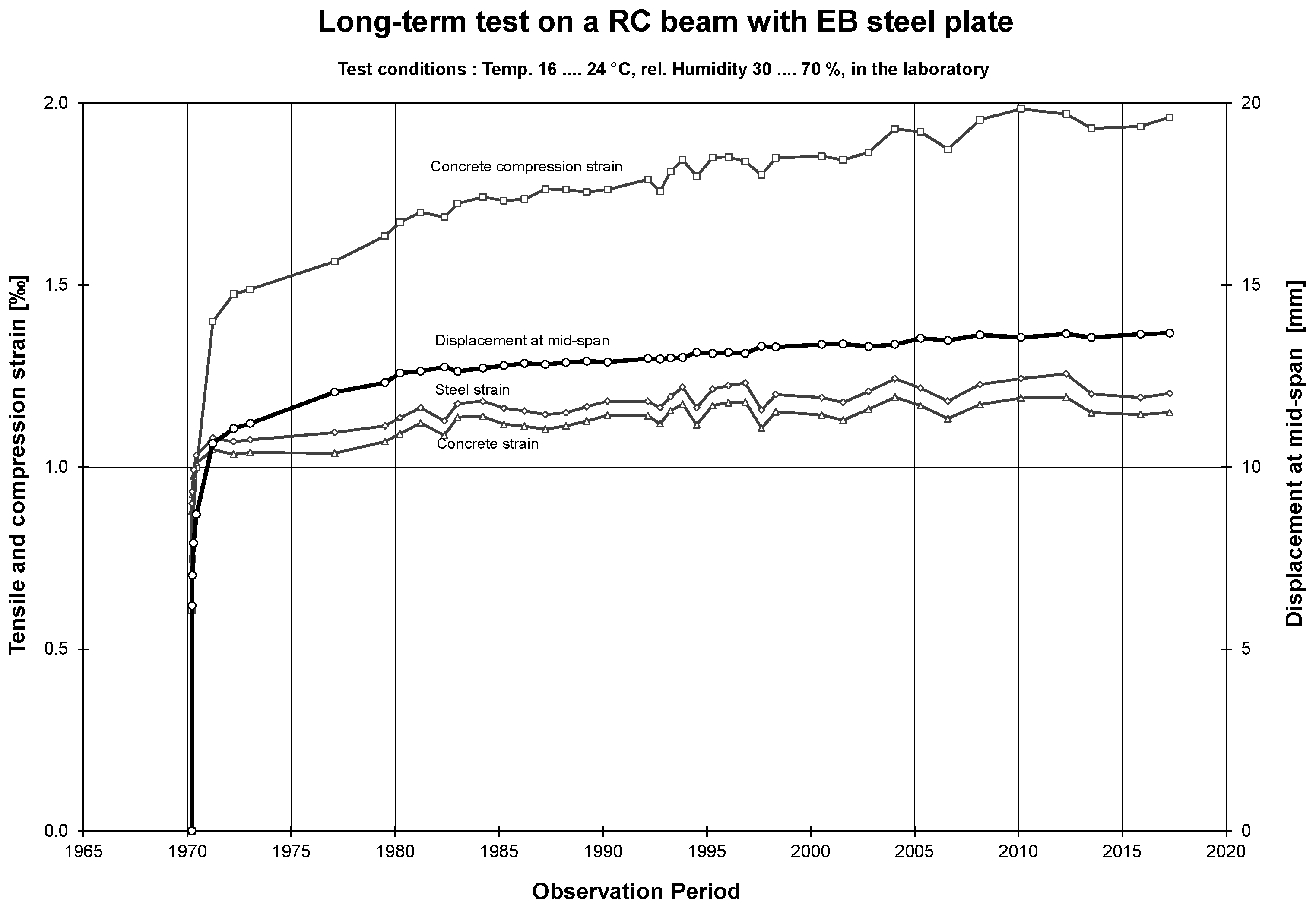


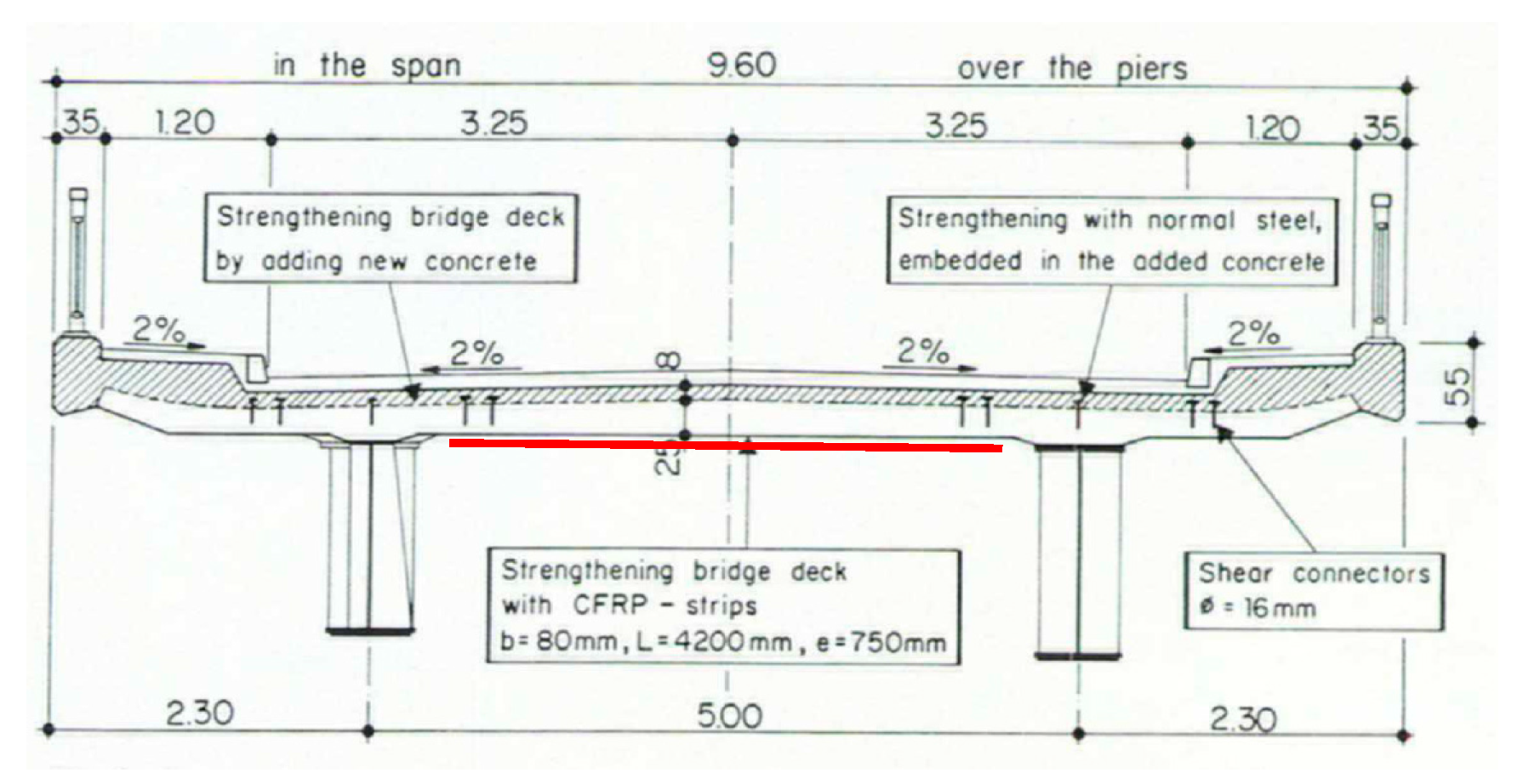
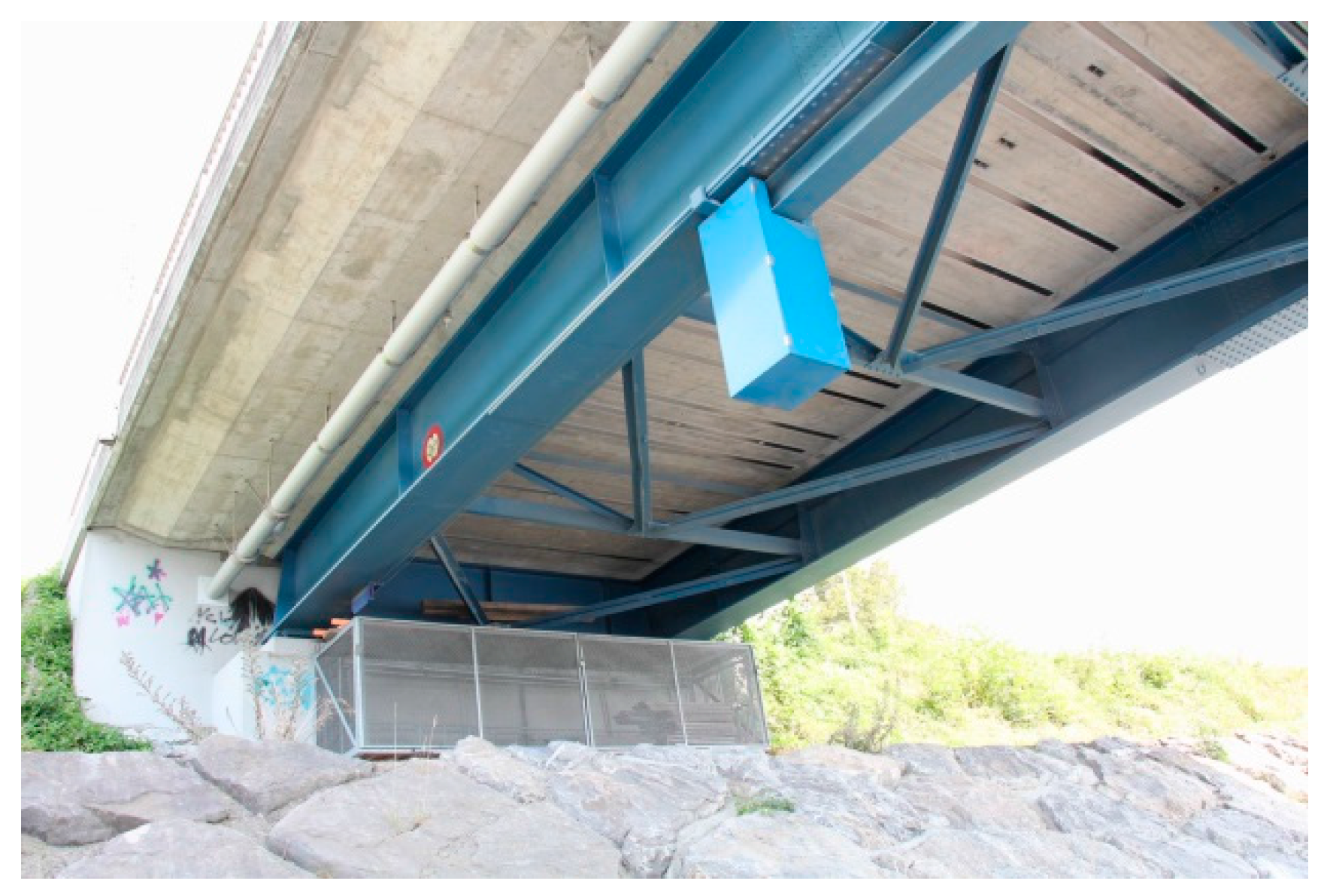
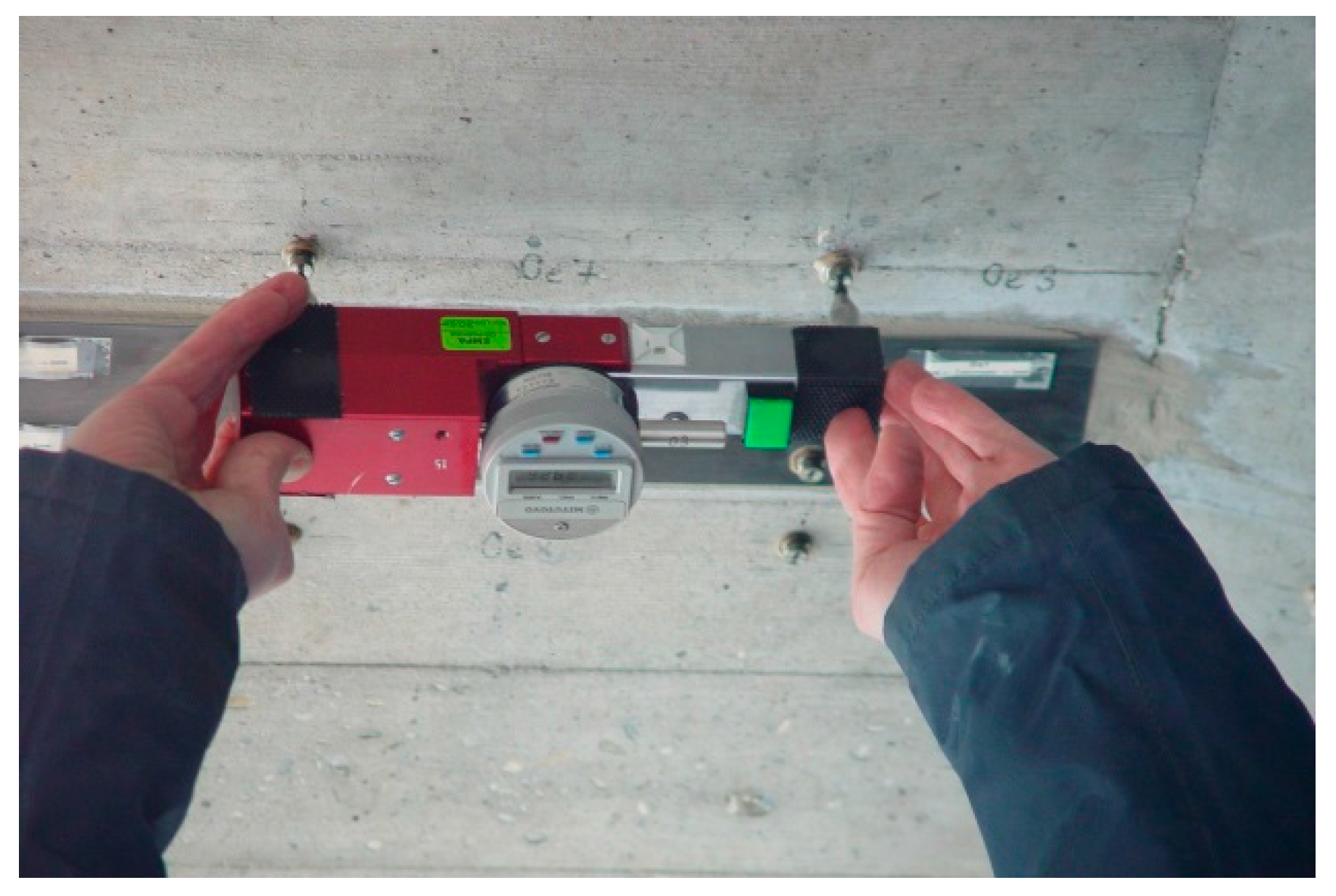
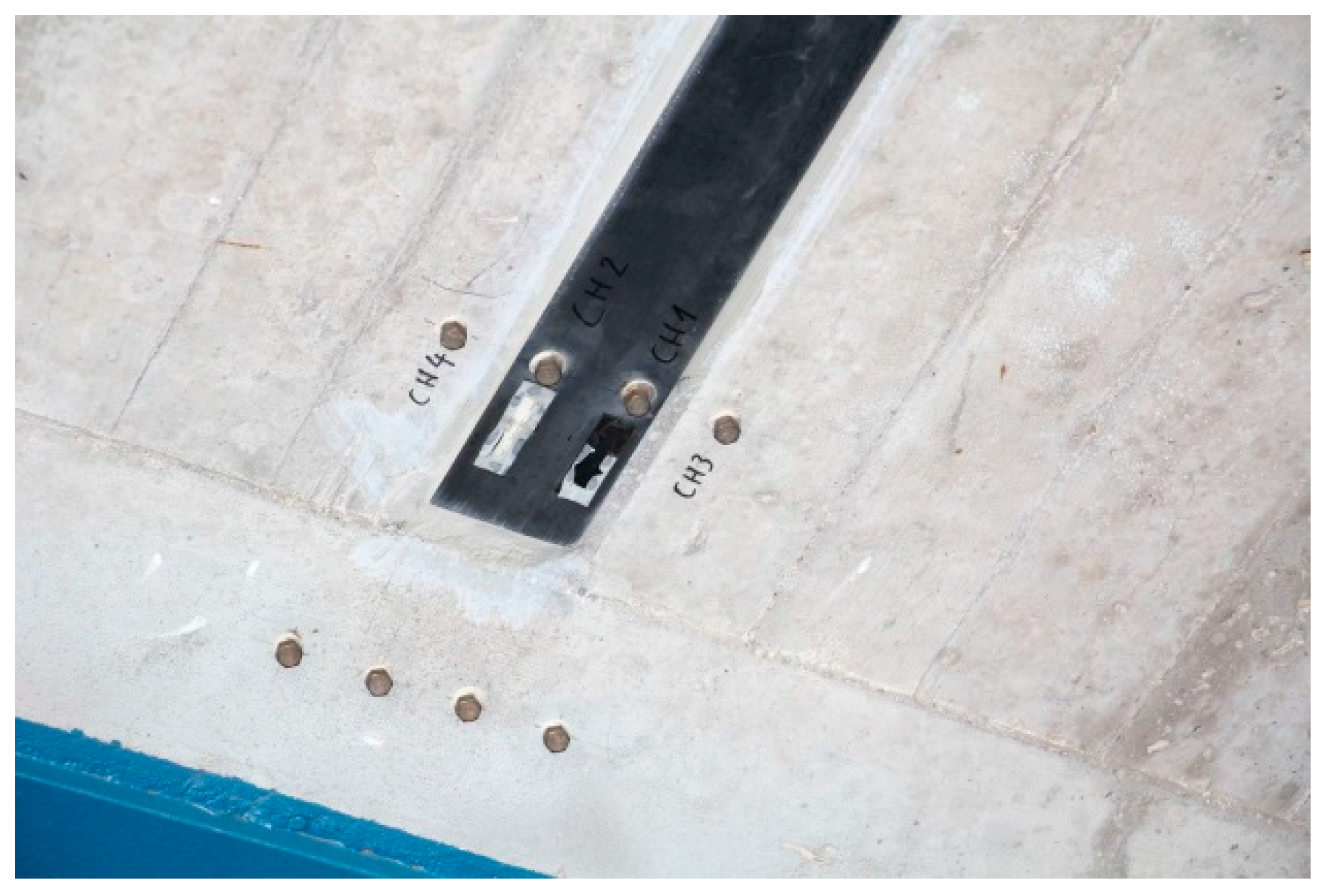
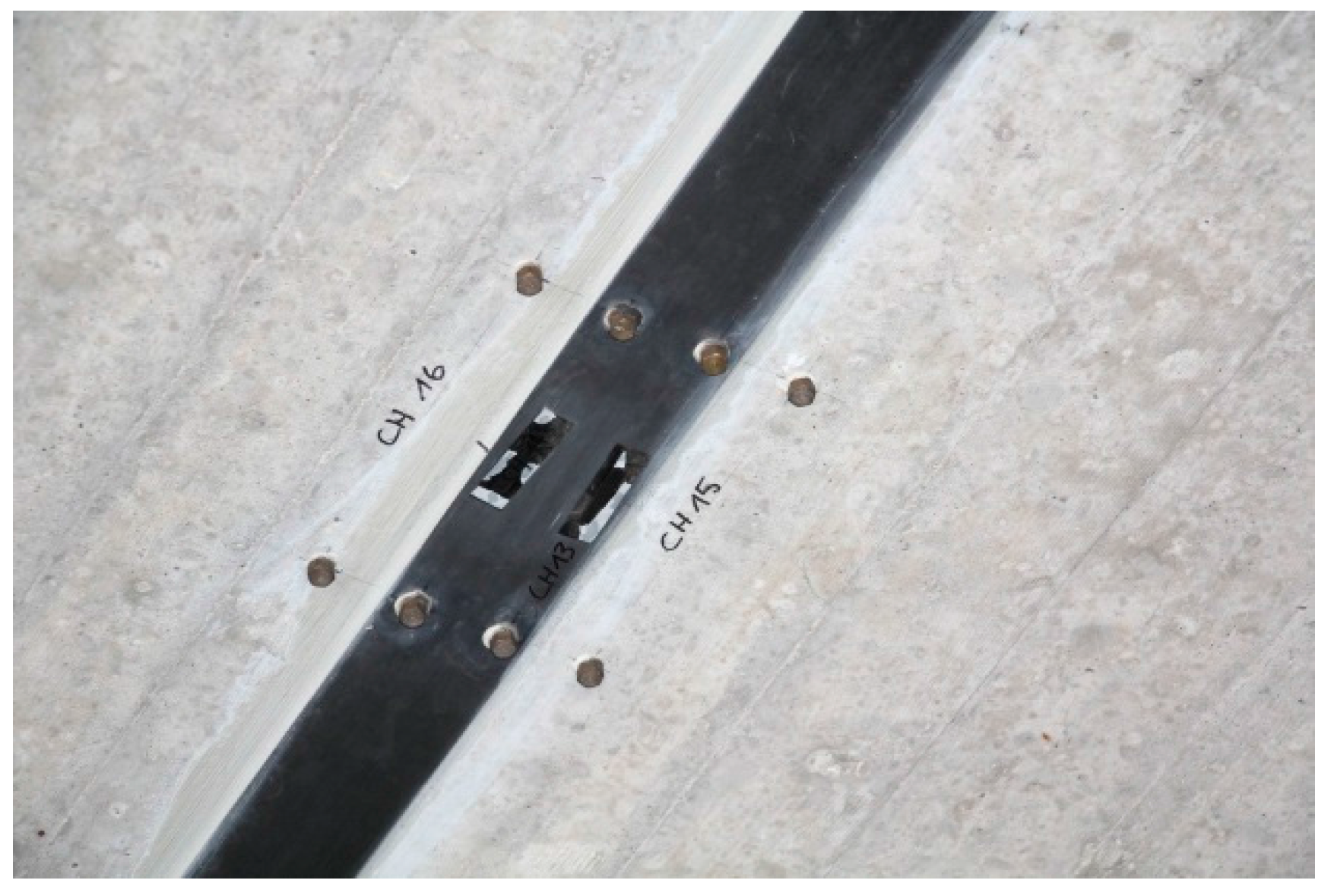
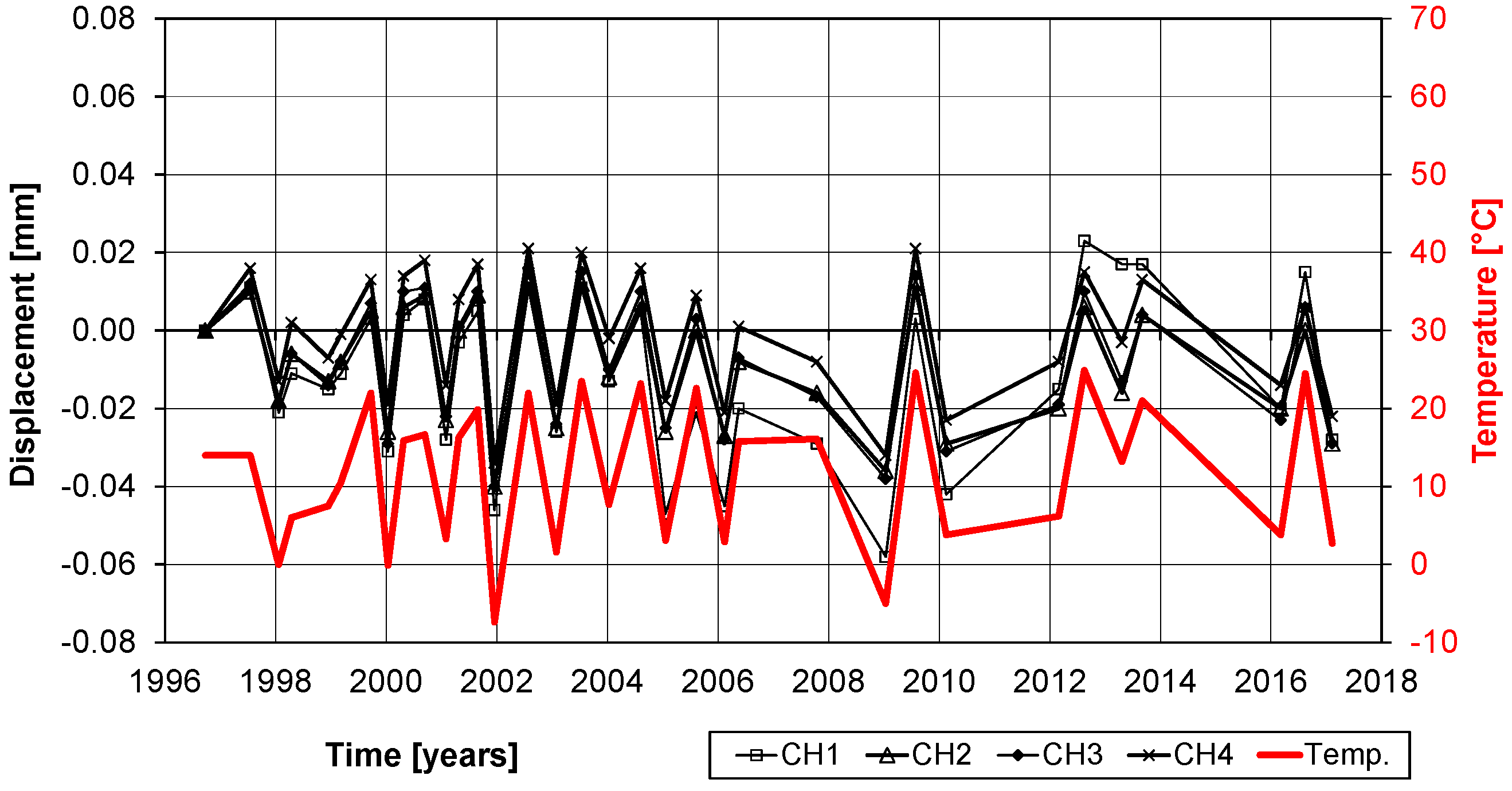
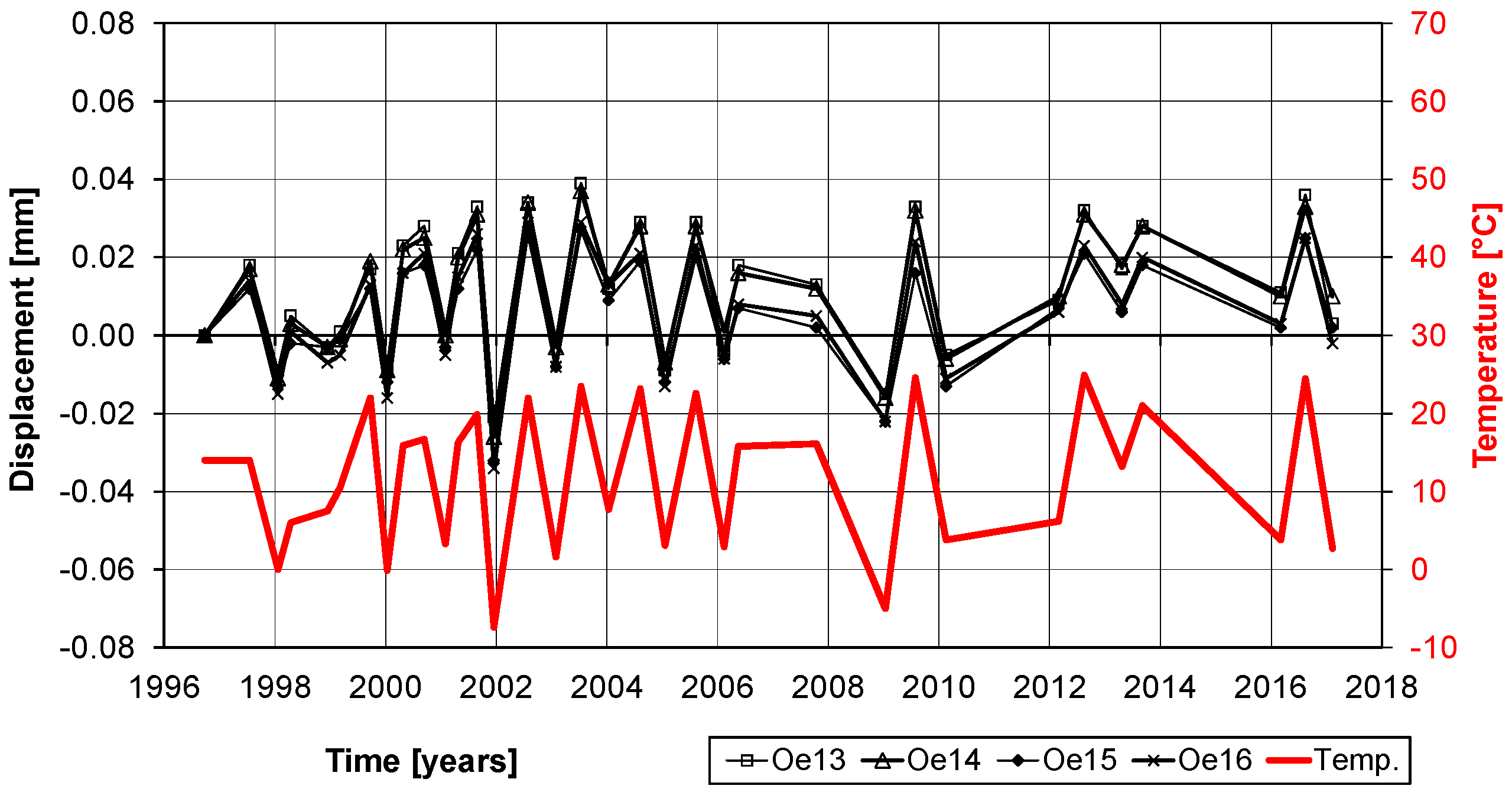
| Date | Years | Displacement [mm] | Concrete compression strain [‰] | Steel tensile strain [‰] |
|---|---|---|---|---|
| 24 March 1970 | 0 | 6.2 | 0.61 | 0.90 |
| 11 April 2017 | 47.1 | 13.7 | 1.96 | 1.20 |
| Creep factor: | 2.2 | 3.2 | 1.3 | |
© 2018 by the authors. Licensee MDPI, Basel, Switzerland. This article is an open access article distributed under the terms and conditions of the Creative Commons Attribution (CC BY) license (http://creativecommons.org/licenses/by/4.0/).
Share and Cite
Czaderski, C.; Meier, U. EBR Strengthening Technique for Concrete, Long-Term Behaviour and Historical Survey. Polymers 2018, 10, 77. https://doi.org/10.3390/polym10010077
Czaderski C, Meier U. EBR Strengthening Technique for Concrete, Long-Term Behaviour and Historical Survey. Polymers. 2018; 10(1):77. https://doi.org/10.3390/polym10010077
Chicago/Turabian StyleCzaderski, Christoph, and Urs Meier. 2018. "EBR Strengthening Technique for Concrete, Long-Term Behaviour and Historical Survey" Polymers 10, no. 1: 77. https://doi.org/10.3390/polym10010077







